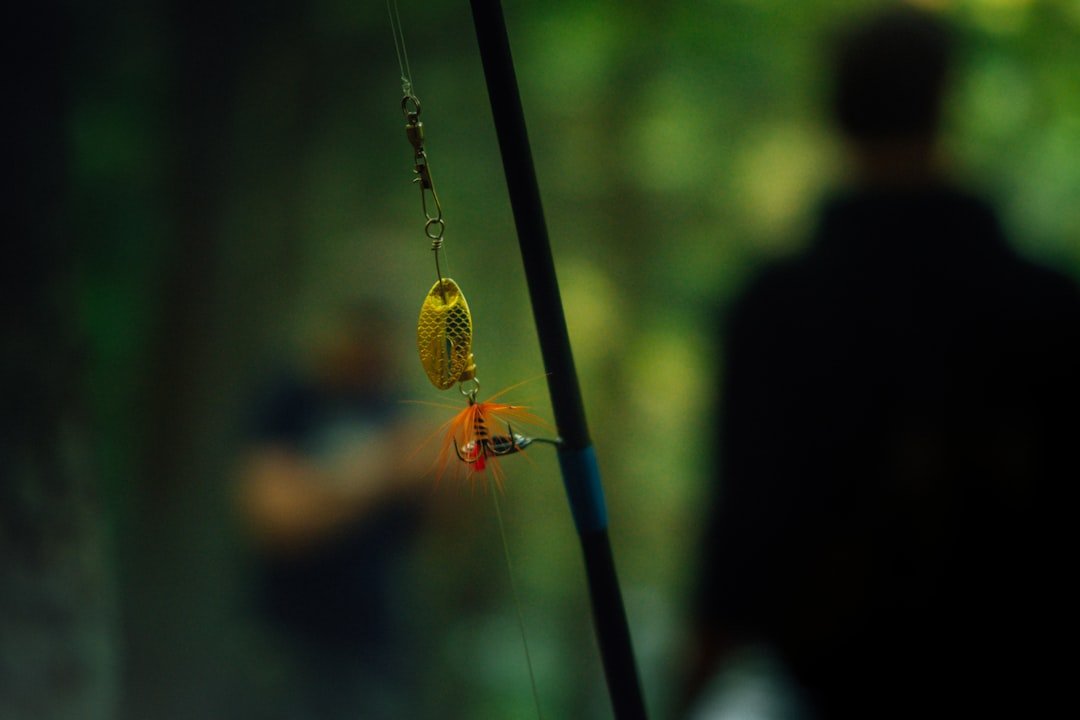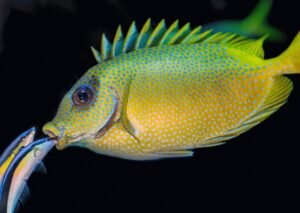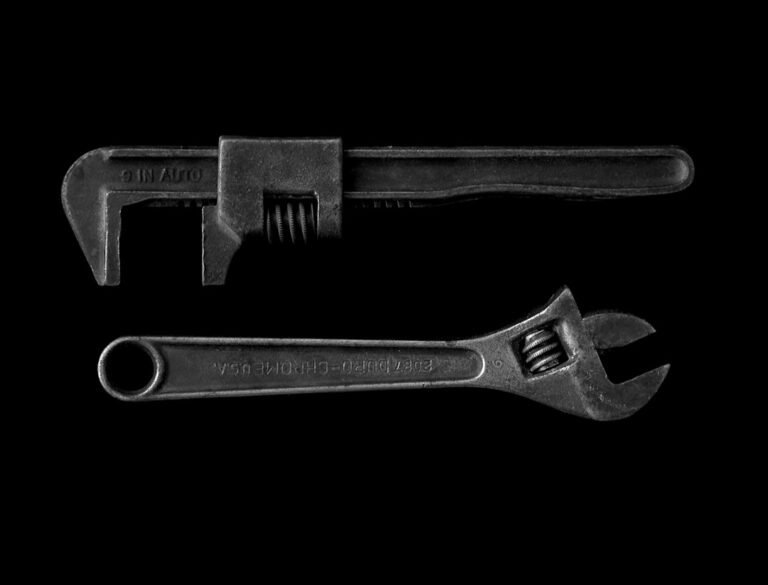Fishing has long been a popular pastime for people all over the world. Whether it’s casting a line into a calm lake or battling the waves on a deep-sea fishing expedition, there is something inherently satisfying about the act of fishing. However, fishing is not as simple as it may seem. It requires knowledge, skill, and patience to be successful. In this article, we will explore the art of fishing and delve into the various aspects that make it such a complex and rewarding activity.
Key Takeaways
- Understanding the mechanics of fish hooks is crucial for successful casting
- Choosing the right hook involves considering types, sizes, and materials
- Selecting and presenting the best bait is essential for attracting fish
- Mastering casting technique requires practice and attention to detail
- Identifying the best spots to cast your line involves reading the water and understanding fish behavior
The Basics of Casting: Understanding the Mechanics of Fish Hooks
One of the fundamental skills in fishing is casting. Casting involves propelling your bait or lure into the water in order to attract fish. To do this effectively, it is important to understand the mechanics of fish hooks. Fish hooks come in various shapes and sizes, but they all have the same basic anatomy. They consist of a curved shank, a point, and a barb. The point is what pierces the fish’s mouth when it bites, while the barb prevents the hook from easily coming out.
The physics of casting also play a crucial role in successful fishing. When you cast your line, you are essentially creating a kinetic energy transfer from your arm to the bait or lure. This energy propels the bait forward and allows it to cover a greater distance. Proper technique is essential for maximizing this energy transfer and achieving accurate and long casts. It involves using your wrist and forearm to generate power, while also maintaining control and accuracy.
Choosing the Right Hook: Types, Sizes, and Materials
Choosing the right hook is another important aspect of fishing. There are various types of hooks available, each designed for specific purposes. For example, circle hooks are commonly used in catch-and-release fishing because they are less likely to cause injury to the fish. J-hooks, on the other hand, are more commonly used in bait fishing as they have a larger gap and are better at hooking the fish.
In addition to the type of hook, it is also important to choose the right size for your bait and target fish. Using a hook that is too large or too small can result in missed bites or lost fish. The general rule of thumb is to match the size of the hook to the size of the bait. Larger baits require larger hooks, while smaller baits require smaller hooks.
The material of the hook is another factor to consider. Hooks are typically made from either stainless steel or high-carbon steel. Stainless steel hooks are more resistant to corrosion and are therefore ideal for saltwater fishing. High-carbon steel hooks, on the other hand, are stronger and more durable, making them suitable for larger fish and heavy-duty fishing.
The Importance of Bait: How to Select and Present the Best Options
| Topic | Metric |
|---|---|
| Types of Bait | Live bait, artificial bait, natural bait, prepared bait |
| Factors to Consider | Water temperature, time of day, weather conditions, fish species |
| Presenting Bait | Depth, speed, movement, scent, color |
| Benefits of Good Bait | Increased catch rate, larger fish, more consistent results |
| Common Mistakes | Using the wrong bait, presenting bait incorrectly, not changing bait often enough |
Selecting the right bait is crucial for attracting fish. Different fish have different feeding habits, so it is important to understand what your target fish likes to eat. Some fish are carnivorous and prefer live bait, while others are herbivorous and prefer plant-based baits. Researching the feeding habits of your target fish will help you choose the most effective bait.
Once you have chosen your bait, it is important to present it in an enticing way. This involves considering factors such as depth, speed, and movement. For example, if you are using live bait, you may want to let it swim freely in the water to mimic natural movement. If you are using artificial lures, you may need to experiment with different retrieval techniques to find what works best.
Mastering the Technique: Tips and Tricks for a Perfect Cast
Mastering the technique of casting is essential for successful fishing. There are several tips and tricks that can help improve your casting accuracy and distance. One important tip is to practice your casting technique regularly. This will help you develop muscle memory and improve your overall casting skills.
Another tip is to use the proper grip when casting. Holding the rod too tightly can restrict your movement and reduce the power of your cast. On the other hand, holding the rod too loosely can result in a loss of control. Finding the right balance between grip and control is key.
Environmental factors such as wind can also affect your casting. When casting into the wind, it is important to adjust your technique to compensate for the resistance. This may involve using a shorter cast or adjusting the angle of your cast. Similarly, when casting with the wind, you may need to adjust your technique to prevent your line from getting tangled.
Reading the Water: Identifying the Best Spots to Cast Your Line

Reading the water is an important skill in fishing. Different bodies of water have different characteristics, and understanding these characteristics can help you identify the best spots to find fish. For example, fish tend to congregate near structures such as rocks, fallen trees, or underwater vegetation. These structures provide shelter and food for fish, making them ideal feeding grounds.
Water conditions also play a role in where fish are likely to be found. For example, fish are more likely to be found in deeper water during hot summer months when the water near the surface is warmer. Similarly, fish are more likely to be found near the surface during cooler months when the water near the bottom is colder.
Adjusting your approach based on water conditions is important for increasing your chances of success. For example, if you are fishing in clear water, you may need to use lighter line and smaller baits to avoid spooking the fish. On the other hand, if you are fishing in murky water, you may need to use larger baits and brighter colors to attract the fish’s attention.
Setting the Hook: When and How to Set It for Maximum Results
Setting the hook is a critical moment in fishing. It is the moment when you feel a bite and need to react quickly to secure the fish. Setting the hook too early or too late can result in missed bites or lost fish. It is important to set the hook quickly and firmly to ensure a solid hookset.
One way to tell when a fish has taken the bait is by paying attention to your line. If you see your line twitch or feel a sudden tug, it is likely that a fish has taken the bait. Another way to tell is by paying attention to your rod tip. If you see your rod tip bend or feel a sudden resistance, it is a sign that a fish has taken the bait.
When setting the hook, it is important to use a quick and firm motion. This involves pulling back on the rod while simultaneously reeling in any slack line. The goal is to drive the hook into the fish’s mouth and secure a solid hookset. It is important to avoid jerking the rod too hard, as this can result in breaking the line or pulling the hook out of the fish’s mouth.
Fighting the Fish: Strategies for Reeling In Your Catch
Once you have set the hook, the next step is to fight the fish and reel it in. Fighting a fish requires strategy and finesse. The goal is to tire out the fish while also avoiding line breaks and other mishaps.
One strategy for fighting a fish is to let it run initially. When a fish feels resistance, its natural instinct is to swim away. By allowing the fish to run, you are giving it an opportunity to tire itself out. Once the initial burst of energy has subsided, you can start reeling in the fish.
It is important to maintain constant pressure on the fish while reeling it in. This involves keeping your rod tip up and applying steady pressure on the fish. If the fish starts to swim towards you, it is important to reel in quickly to maintain tension on the line. If the fish starts to swim away from you, it is important to let it run and tire itself out.
Landing the fish safely and efficiently is the final step in fighting a fish. This involves using a landing net or carefully bringing the fish close to shore or onto the boat. It is important to handle the fish with care and avoid causing unnecessary harm. Wetting your hands before handling the fish can help protect its delicate scales and skin.
Catch and Release: Best Practices for Ethical Fishing
Catch and release fishing has become increasingly popular in recent years as a way to conserve fish populations. It involves catching a fish and then releasing it back into the water unharmed. However, catch and release fishing must be done responsibly in order to minimize harm to the fish.
One important practice is to use barbless hooks when catch and release fishing. Barbless hooks are easier to remove from the fish’s mouth, reducing the risk of injury. If you are using barbed hooks, it is important to handle the fish with care and use proper techniques for hook removal.
When handling a fish, it is important to wet your hands before touching it. This helps protect the fish’s delicate scales and skin from damage. It is also important to avoid squeezing or gripping the fish too tightly, as this can cause internal injuries.
When releasing a fish, it is important to do so gently and quickly. Holding the fish in the water and allowing it to swim away on its own is the best way to ensure its survival. If you need to remove the hook, do so quickly and carefully using proper techniques.
Troubleshooting Common Problems: Snags, Tangles, and More
Fishing can sometimes be frustrating when things don’t go as planned. Snags, tangles, and other problems can occur, but there are strategies for dealing with these issues.
One common problem is getting your line snagged on underwater structures. When this happens, it is important to remain calm and avoid pulling on the line forcefully. Instead, try gently shaking the line or repositioning yourself to a different angle. If all else fails, you may need to cut the line and re-rig your setup.
Tangles can also be a common problem, especially when casting or reeling in your line. To prevent tangles, it is important to maintain proper line tension throughout the cast or retrieve. If you do get a tangle, try gently pulling on the line to untangle it. If that doesn’t work, you may need to cut the line and re-tie your rig.
Another common problem is losing fish due to line breaks. To avoid this, it is important to use the appropriate line strength for your target fish. It is also important to regularly check your line for any signs of wear or damage. If you notice any fraying or weak spots, it is best to replace the line before it breaks.
Advanced Techniques: Fly Fishing, Jigging, and Other Specialized Approaches
Once you have mastered the basics of fishing, you may want to explore more advanced techniques. Fly fishing, jigging, and other specialized approaches offer unique challenges and rewards.
Fly fishing is a technique that involves using a lightweight fly rod and an artificial fly to catch fish. It requires precise casting and presentation skills, as well as an understanding of insect behavior. Fly fishing can be done in both freshwater and saltwater environments and is popular among anglers who enjoy the artistry and finesse of the sport.
Jigging is another specialized technique that involves using a jig lure to attract fish. Jigs are versatile lures that can be used in both freshwater and saltwater environments. They are typically made of metal and have a weighted head and a hook. Jigging involves bouncing the lure off the bottom of the water to mimic the movement of prey and attract fish.
Other specialized approaches include trolling, ice fishing, and surf fishing. Trolling involves dragging lures or bait behind a moving boat to attract fish. Ice fishing involves drilling a hole in the ice and dropping a line with bait or a lure into the water below. Surf fishing involves casting your line from the shoreline into the surf to catch fish that are feeding near the shore.
The Joy of Fishing
Fishing is not just a hobby; it is an art form that requires knowledge, skill, and patience. It is a way to connect with nature, challenge yourself, and experience the thrill of the chase. Whether you are a beginner or an experienced angler, there is always something new to learn and discover in the world of fishing.
The rewards of mastering the art of fishing are many. It offers an opportunity to spend time outdoors, away from the stresses of everyday life. It provides a sense of accomplishment and satisfaction when you successfully land a fish. And perhaps most importantly, it allows you to connect with nature and appreciate the beauty and wonder of the natural world.
So, whether you are casting a line into a calm lake or battling the waves on a deep-sea fishing expedition, remember to approach fishing as an art form. Take the time to learn and practice the various techniques, experiment with different baits and lures, and explore new fishing spots. And most importantly, enjoy the process and embrace the joy of fishing.
If you’re interested in exploring the changing landscape of various industries, you might want to check out this fascinating article on how fish hooks cast a light on the evolving world of fishing. It delves into the innovative techniques and technologies being used to improve fishing practices and highlights the importance of sustainability in this age-old activity. To learn more, click here.




















+ There are no comments
Add yours